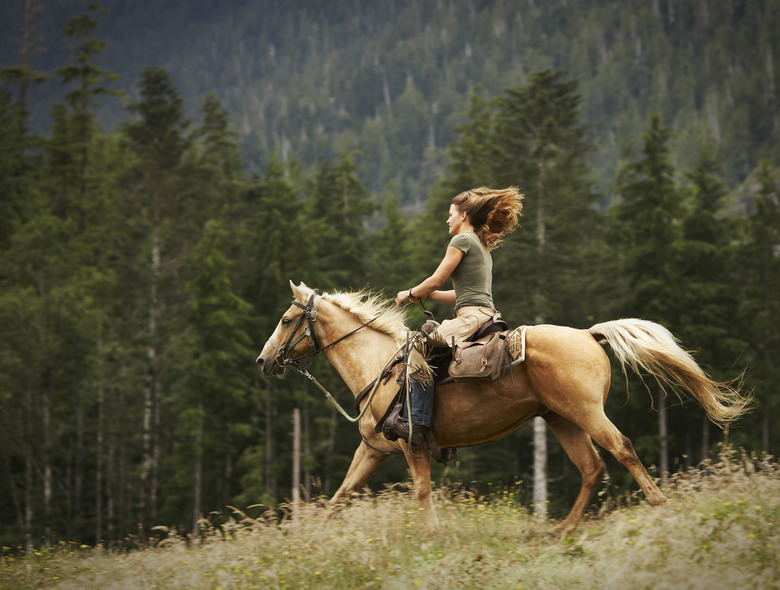What Is A Trait Which Results From Two Dominant Genes?
We can thank the work of Gregor Mendel who, in the 1860s, was the first to explain how certain genetic factors dominate other ones. He found that when he crossed a pea plant with round peas to a wrinkled-pea variety, 75 percent of the offspring had round peas. He understood that each plant had two genetic factors — what we now call genes — and that having a dominant factor masked the recessive one. In some cases, such as the color of a horse's coat, both genes are codominant.
Two Dominant Genes
Two Dominant Genes
Organisms that reproduce sexually have two copies of each gene, one from each parent. These matching gene pairs are called alleles. A dominant allele masks the expression of the recessive gene's trait. The alleles are homozygous if they code for the same trait and heterozygous if they code for different traits. A homozygous pair might have two dominant or two recessive alleles. Dominant genes are indicated by capital letters, recessives by small letters. For example, "P" stands for round peas and "w" stands for the wrinkled variety. A heterozygous pea plant has the Pw allele pair, while a dominant homozygous plant has two dominant genes, PP. Both have round peas.
Codominance
Codominance
Animal scientists have identified the genes that give a horse a roan-colored coat as being codominant. When a homozygous white-coated horse (WW) is crossed with a homozygous red horse (RR), half the offspring will inherit the heterozygous RW combination and have a roan-colored coat. Each hair in a roan coat is completely red or white, because both genes are expressed. When you stand back from a roan horse, the colors merge into a light red, but none of the hairs are light red.
Incomplete Dominance
Incomplete Dominance
Incomplete dominance is a horse of another color. The result of an incompletely dominant allele pair is a blending of two traits. For example, many horse breeds have a cream gene that modifies their base color. The cream gene is incompletely dominant, so horses with two cream alleles have lighter coats than do their one-allele counterparts. The cream gene dilutes a horse's base color, so that having two cream alleles doubles the impact on coat color.
Blood Types
Blood Types
Human blood comes in four types: A, B, AB and O. A single allele pair is responsible for a person's blood type. A and B alleles are codominant, whereas the O allele is recessive. The combinations work out as follows: AA and AO give type A blood, BB and BO gives type B blood, AB gives AB blood and OO gives O type blood. In this case, the codominant trait is also a multi-allele trait, meaning the gene can express more than two alternative traits.
Cite This Article
MLA
Finance, Eric Bank, MBA, MS. "What Is A Trait Which Results From Two Dominant Genes?" sciencing.com, https://www.sciencing.com/trait-results-two-dominant-genes-20188/. 24 April 2017.
APA
Finance, Eric Bank, MBA, MS. (2017, April 24). What Is A Trait Which Results From Two Dominant Genes?. sciencing.com. Retrieved from https://www.sciencing.com/trait-results-two-dominant-genes-20188/
Chicago
Finance, Eric Bank, MBA, MS. What Is A Trait Which Results From Two Dominant Genes? last modified March 24, 2022. https://www.sciencing.com/trait-results-two-dominant-genes-20188/
